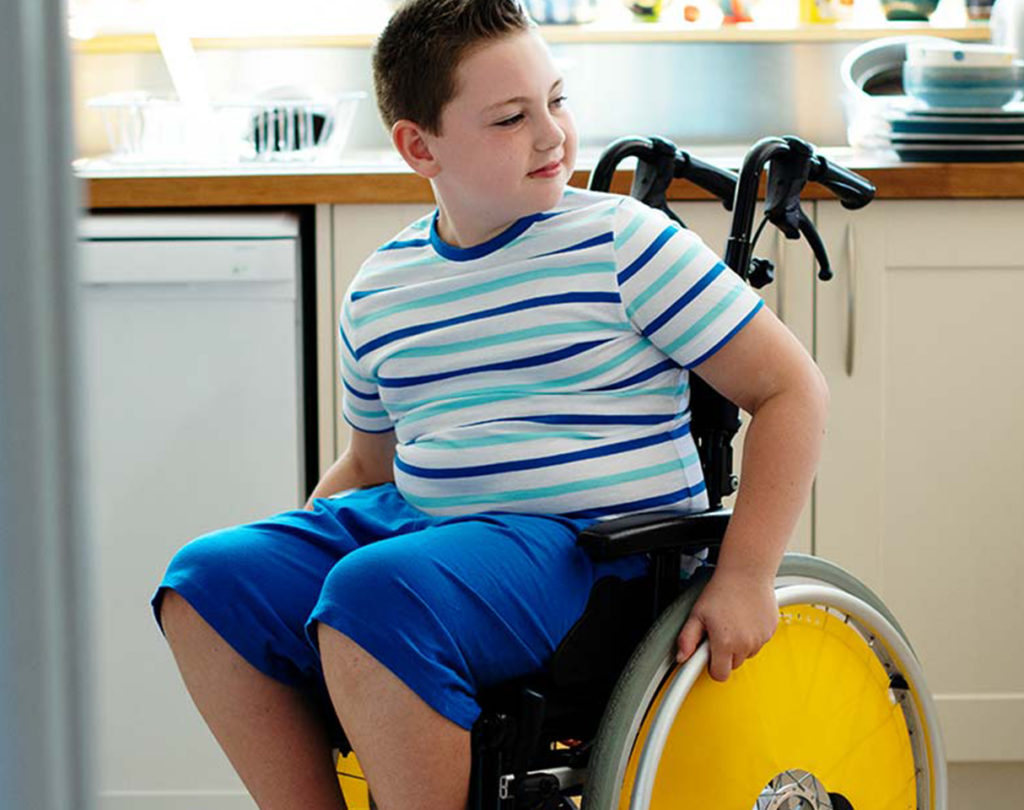 “Assistive technologies are an important addition to physical and occupational therapy.” – Dr. Catherine Bearce Nowak
“Assistive technologies are an important addition to physical and occupational therapy.” – Dr. Catherine Bearce Nowak
Fourteen percent of people in the US have a mobility disability. Everyday tasks like getting out of bed in the morning, walking, or even sitting on a chair can present challenges for adults and children with mobility disabilities. By helping adults and children with physical disabilities perform routine tasks, adaptive mobility devices can transform an adult’s independence and maximize a child’s potential.
According to Dr. Catherine Bearce Nowak, Clinical Director at The Feingold Center for Children, assistive technologies and adaptive devices are an important addition to physical or occupational therapy but are either not covered at all by insurance companies or only partially covered.
In this article, we’ll help you better understand adaptive mobility devices and their benefits, plus share an inspiring patient mobility success story.
What is an assistive technology tool or adaptive device?
Assistive technologies and adaptive devices are either physical equipment or digital tools that help adults and children with physical, intellectual, speech, hearing, and/or vision impairments to participate in activities, perform tasks, be more active, and live a more independent and functional life.
What are examples of assistive mobility devices?
Adaptive bikes, strollers, wheelchairs, and leg braces are among some of the most common assistive mobility devices that we fund for our young and growing patients:
Adaptive Bikes
Adaptive bikes can be instrumental in getting a patient’s legs moving better and improving their walking — and are usually not covered by insurance companies.
Adaptive Strollers
Adaptive strollers help families safely move their child who is too large for a regular stroller in a setting like the local store, doctors appt or outdoor event – and are usually not covered or only partially covered by most insurance companies.
Wheelchairs and Leg Braces
Wheelchairs and braces are necessary for mobility but a growing child can quickly outgrow these and family has to wait until they’re allowed a new one — and are usually covered by insurance companies.
Other common assistive mobility technologies for adults and children:
- Adaptive Electric Strollers
- Canes
- Crutches
- Electric Scooters
- Grab Bars
- Lift Vans
- Orthotic Devices
- Prosthetic Devices
- Ramps
- Rollators
- Walkers
What are the benefits of adaptive mobility devices?
Assistive technologies can be medically necessary for people with physical disabilities, genetic disorders, or diseases to thrive in our modern world. Through technology, mobility assistance makes it easier for adults and children with disabilities to get around and be active – even making it possible for some people to walk and perform independent tasks.
Patient Success Story
A six-year-old patient with a progressive muscle disorder who is followed by specialists at The Feingold Center for Children had never been able to walk due to tight muscles. The patient received excellent regular physical therapy to keep his muscles as limber as possible. When his therapist thought an adaptive bike might help, he took to it very quickly during his physical therapy sessions.
Unfortunately, it was not within the family budget to get him an adaptive bike of his own to use every day at home, so The Genesis Foundation for Children Assistive Technology Fund helped the family make this purchase. The child was thrilled with his newfound independence and sense of accomplishment, and his family and therapy team noticed the bike allowed him to move his legs in ways no one knew he could do. After many months with the adaptive bike, he is now able to walk with a walker — proving just how vital these “added extras” can be in maximizing a child’s potential.
Adaptive mobility devices can be life-changing
There are hundreds of different assistive technologies on the market. Adaptive mobility devices are more than just helpful aids that can enable a person with physical disabilities to perform routine tasks, they can transform lives by empowering people with disabilities to live to their full potential, vigorously and independently.
Learn more about how we fund assistive technologies or donate today to help fund an assistive technology for a child in need.
For nearly 40 years, The Genesis Foundation has helped fund assistive technology devices for patients affected by a rare disease or genetic disorder from childhood through adulthood. To relieve the family of this financial burden and provide our children with a healthy and happy upbringing, The Genesis Foundation helps to cover some of the costs of these devices. We are committed to helping provide children seen at the Feingold Center for Children with assistive technologies to help them thrive in our modern world.
